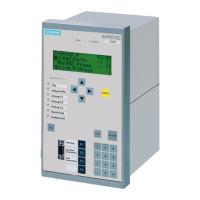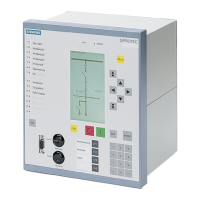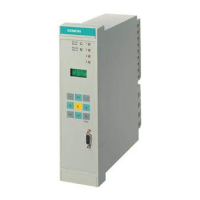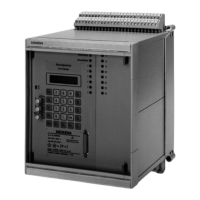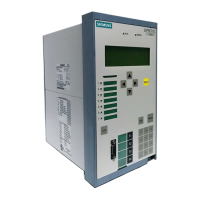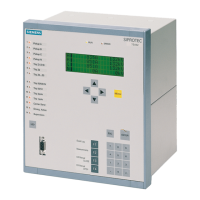2.13 Circuit Breaker Failure Protection
183
7SD610 Manual
C53000-G1176-C145-4
(Figure 2-69). Thus, current flow and initiation conditions are processed for each
phase. In case of single-pole interruption before an automatic reclose cycle, current
disappearance is reliably monitored for the tripped breaker pole only.
Initiation of an individual phase, e.g. „Start only L1“, is only valid if the starting signal
(= tripping signal of the feeder protection) appears for exactly this phase and if the
current criterion is met for at least this phase. If it is not met, the circuit breaker auxil-
iary contact can be interrogated according to Figure 2-64 – if parameterised (Chk BRK
CONTACT = YES).
The auxiliary contact criterion is also processed for each individual breaker pole. If,
however, the breaker auxiliary contacts are not available for each individual breaker
pole, then a single-pole trip command is assumed to be executed only if the series
connection of the normally open (NO) auxiliary contacts is interrupted. This informa-
tion is provided to the breaker failure protection by the central function control of the
device (refer to Section 2.16.1).
If there are starting signals of more than one phase, the common phase initiation „Start
L123“ is used. Phase-segregated initiation is then blocked. The input "BF Start w/o I"
(e.g. from Buchholz protection) operates only in three-phase mode. The function is the
same as with common phase initiation.
The additional release-signal „>BF release“ (if assigned to a binary input) affects
all initiation conditions. Initiation can be blocked via the binary input „>BLOCK
BkrFail“ (e.g. during test of the feeder protection relay).
www . ElectricalPartManuals . com
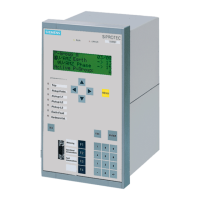
